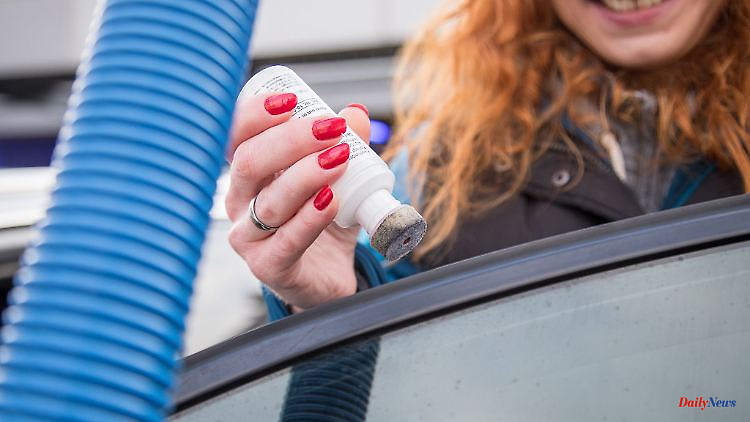If the car door does not open in winter, the seals may be frozen. Brute force is then no solution. Here are a few tricks that will help better.
Click, the car lock opens, but the car door won't open. At low temperatures it can happen that the door seals have frozen solid. With all the trouble and stress: If you then use brute force, you risk tearing the material and having to replace it at great expense. Depending on the model, this can cost up to several hundred euros. In such a case, you are better off with caution - and you will reach your goal faster. So into the car.
Applying a little pressure is allowed - in the literal sense. The ADAC advises pushing something against the door from the outside. With a little skill, the ice could be detached from the gaps. Gently tapping on the door panel is also worth trying.
Doesn't work? Then it is worth trying a different door first. With a bit of climbing, you might be able to get behind the wheel from the passenger seat. From here you can then try whether the door can be pushed open from the inside in a better dosed manner. Before driving off, you should always ensure that the driver's door can be opened from the outside - this is important for any assistance that may be required after an accident.
With a sense of proportion and sure instinct, the driver's door can also be opened with water. To do this, heat water to around 50 degrees and then carefully pour it along the door frame. Never use very hot or boiling water. This could damage the paint. And be careful: Don't pour the water over the pane. This may crack or burst due to the sudden increase in temperature. "The water can be caught with a cloth or a towel before it reaches the pane," says ADAC spokesman Jürgen Grieving, explaining the correct technique for this procedure.
The water method has a catch, of course. Because if the door now opens, it has to be reworked. The inside and door seals then have to be meticulously dried to prevent them from freezing again. By the way: washer fluid for windows with antifreeze is less suitable for loosening frozen doors. "As a rule, that would not even reach the place of icing, but the heat of the water would," explains Grieving.
Reaching for the hair dryer is also usually not a good idea to warm up a frozen lock or seals. The hot air from the dryer often cools down so quickly that it does not reach the icing in the rubber seals. And a real heat gun with its high temperatures can even damage the door. Paint and primer could also melt or flake off.
Clean and well-kept rubber on doors and hoods not only keeps the car airtight and the interior dry and as quiet as possible. They also don't freeze solid in winter. To clean them easily and gently, water with a little pH-neutral soap is best. That can also be a mild leather soap, says car care expert Christian Petzoldt from Hagen.
Preferably a damp cotton cloth is used to wipe the surface to remove dirt. Then dry the rubbers carefully and thoroughly with another soft cotton cloth. Only then do you apply a rubber care product. This fills the small pores in the rubber surface so that no moisture can collect there. This is particularly important in winter: if moisture can get stuck in these depressions, it is a guarantee that it will freeze solid. Older and more porous seals are more prone to this, as are seals that have been neglected or have minor defects.
When it comes to care, the expert Petzoldt advises using products specially designed for this purpose: in principle, household products such as butter or oils also provide a protective film on the rubber. But they could tip over and go rancid.
ADAC spokesman Grieving also advises against budget funds. Agents such as petroleum jelly and deer tallow should also not be used in their pure form, although these are sometimes included in the formulations of recommended care products.
Another general tip: The thicker the agent and thus the higher the application, the more suitable it is for older and somewhat damaged seals with larger bumps. More liquid products can be used with new and well-groomed rubbers, says Petzoldt. As a rule, it is sufficient to care for the rubbers twice a year. It may be more common in older cars.
If a classic car lock is frozen, a door lock deicer will help. It's better to keep it outside the car, advises Vincenzo Lucà from TÜV Süd. So help is at hand in an emergency.
This is how it works: Depending on the product's operating instructions, the agent is sprayed or dripped into the lock. Then wait a moment until the key can be used normally. The ADAC brings alcohol-based disinfectants into play as an alternative.
Another trick: In the case of old cars without a radio lock and with a completely analog key with a beard, it might be worth trying to carefully heat it up with a lighter. Then carefully insert the hot key, turn it and try to thaw the ice.












